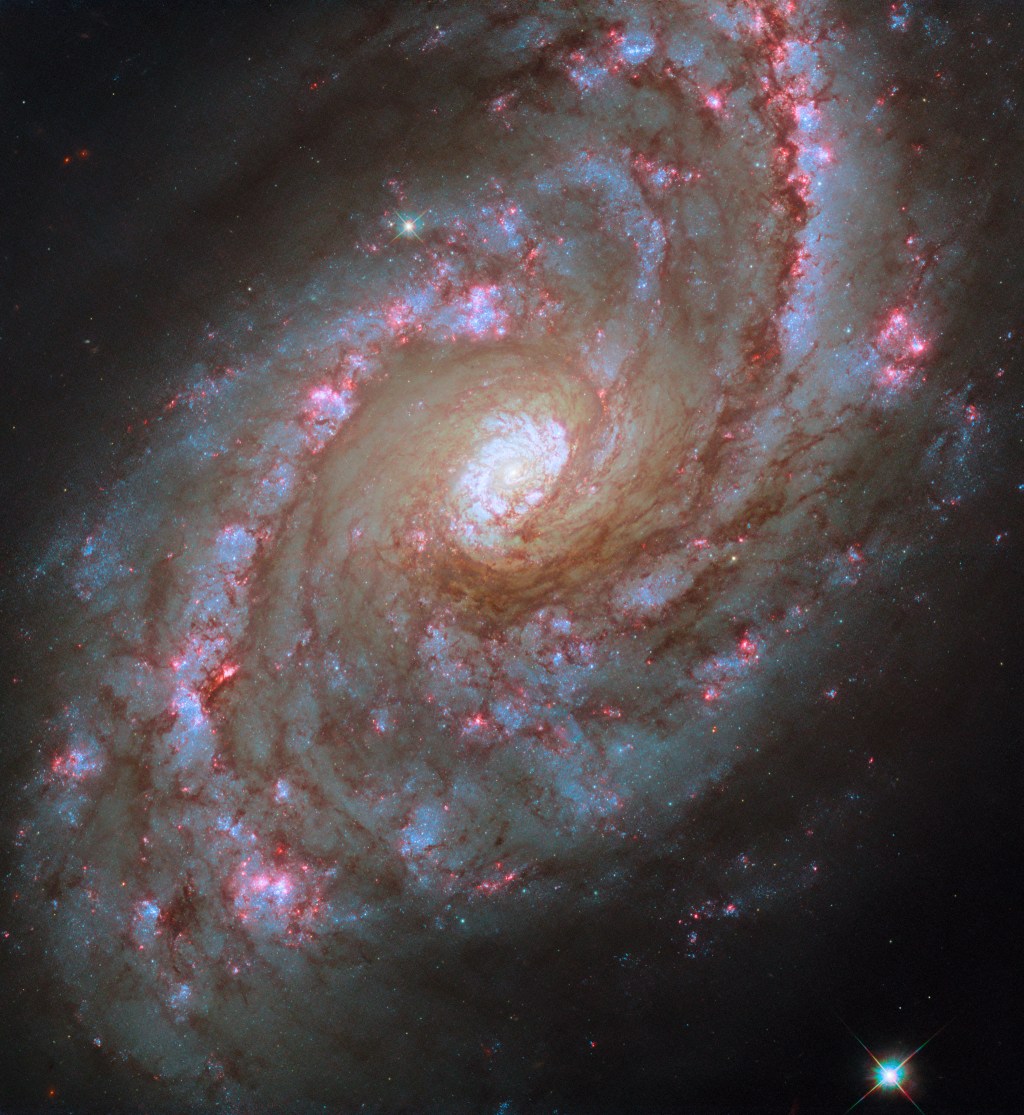NGC 5248: A Closer Look at the Intricacies of a Grand Design Spiral Galaxy
NGC 5248 is a fascinating celestial object, often classified among the ‘grand design’ spiral galaxies. These galaxies are characterized by their distinct and well-defined spiral arms, which stretch gracefully from the central core out through the expansive disk. In the case of NGC 5248, this captivating structure is complemented by a subtle bar formation at its center. This bar is located between the inner ends of the spiral arms, but it’s not immediately apparent in the visible-light imagery captured by the Hubble Space Telescope.
Understanding the Structure and Dynamics of NGC 5248
The features observed in NGC 5248, such as the spiral arms and the central bar, play a crucial role in the galaxy’s dynamics and evolution. These structures disrupt the rotational symmetry of the galaxy, which significantly affects how matter moves within it. Over time, these movements can influence the galaxy’s evolution in profound ways.
One of the most important functions of these features is their ability to channel gas from the galaxy’s outer regions toward the inner star-forming areas. This process is essential for the birth of new stars, as it supplies the necessary materials to these regions. Additionally, the movement of gas toward the galaxy’s center can fuel the central black hole, potentially igniting an active galactic nucleus. An active galactic nucleus is a compact region at the center of a galaxy that is exceptionally bright, often outshining the entire galaxy because of the energy emitted by matter falling into the black hole.
The Role of Spiral Arms in Galactic Evolution
Spiral arms are not merely aesthetic features; they are dynamic regions where various processes occur that shape the galaxy’s future. These arms are typically sites of intense star formation, a phenomenon often referred to as "stellar nurseries." As gas and dust accumulate in these spiral arms, they create the perfect environment for stars to form. This ongoing process of star formation and evolution contributes to the overall growth and change of the galaxy over astronomical timescales.
The spiral arms also act as a conveyor belt, moving material around the galaxy. This movement facilitates the redistribution of gas and dust, which can trigger star formation in different parts of the galaxy. As stars evolve and die, they release elements into the interstellar medium, enriching the galaxy with heavier elements over time.
The Impact of Central Bars in Galaxies
Central bars, like the one found in NGC 5248, are another critical component in the life cycle of a galaxy. These structures are thought to be relatively common in spiral galaxies and are believed to play a role in regulating the flow of gas within the galaxy. By driving gas toward the galaxy’s core, bars can stimulate both star formation and activity around the central black hole.
The presence of a bar can also influence the spiral arms, often making them more pronounced or altering their shape. This interaction between the bar and the spiral arms can create a feedback loop that further affects the distribution of matter and the rate of star formation throughout the galaxy.
Observations and Research: Unveiling the Mysteries of NGC 5248
The Hubble Space Telescope’s observations of NGC 5248 provide a wealth of information for astronomers studying the intricacies of spiral galaxies. By analyzing the visible-light images, scientists can gain insights into the distribution of stars, gas, and dust within the galaxy. These observations help researchers understand how spiral arms and central bars influence the movement of matter and the evolutionary processes within the galaxy.
Additionally, studying galaxies like NGC 5248 allows astronomers to test theoretical models of galaxy formation and evolution. By comparing observational data with simulations, scientists can refine their understanding of the physical processes that shape galaxies over time. This research is crucial for unraveling the complex history of our universe and the various factors that drive galactic evolution.
Implications for Understanding Our Own Galaxy, the Milky Way
Research on galaxies such as NGC 5248 has broader implications for our understanding of our own galaxy, the Milky Way. Although the Milky Way is also a spiral galaxy, its structure and dynamics can be challenging to study from within. By observing other spiral galaxies, astronomers can draw parallels and make inferences about the processes occurring in the Milky Way.
For instance, understanding the role of spiral arms and central bars in other galaxies can shed light on similar features in the Milky Way. This knowledge can help us better comprehend the formation and evolution of our galaxy, as well as the potential for star formation and the activity of the central black hole.
Conclusion: The Continuing Quest to Understand Spiral Galaxies
The study of NGC 5248 and other grand design spiral galaxies continues to be a vital field of research in astronomy. These galaxies offer a unique opportunity to explore the complex interplay between structure, dynamics, and evolution in the universe. By delving into the intricacies of spiral arms, central bars, and the movement of matter, astronomers can gain valuable insights into the history and future of galaxies.
As technology advances and telescopes become more powerful, the potential for new discoveries in the realm of spiral galaxies grows ever greater. The ongoing exploration of these celestial wonders not only enhances our understanding of the cosmos but also inspires a sense of awe and curiosity about the universe we inhabit.
For more detailed information and images of NGC 5248, you can visit the official Hubble Space Telescope website, where these observations are available for public viewing and study.
For more Information, Refer to this article.
































